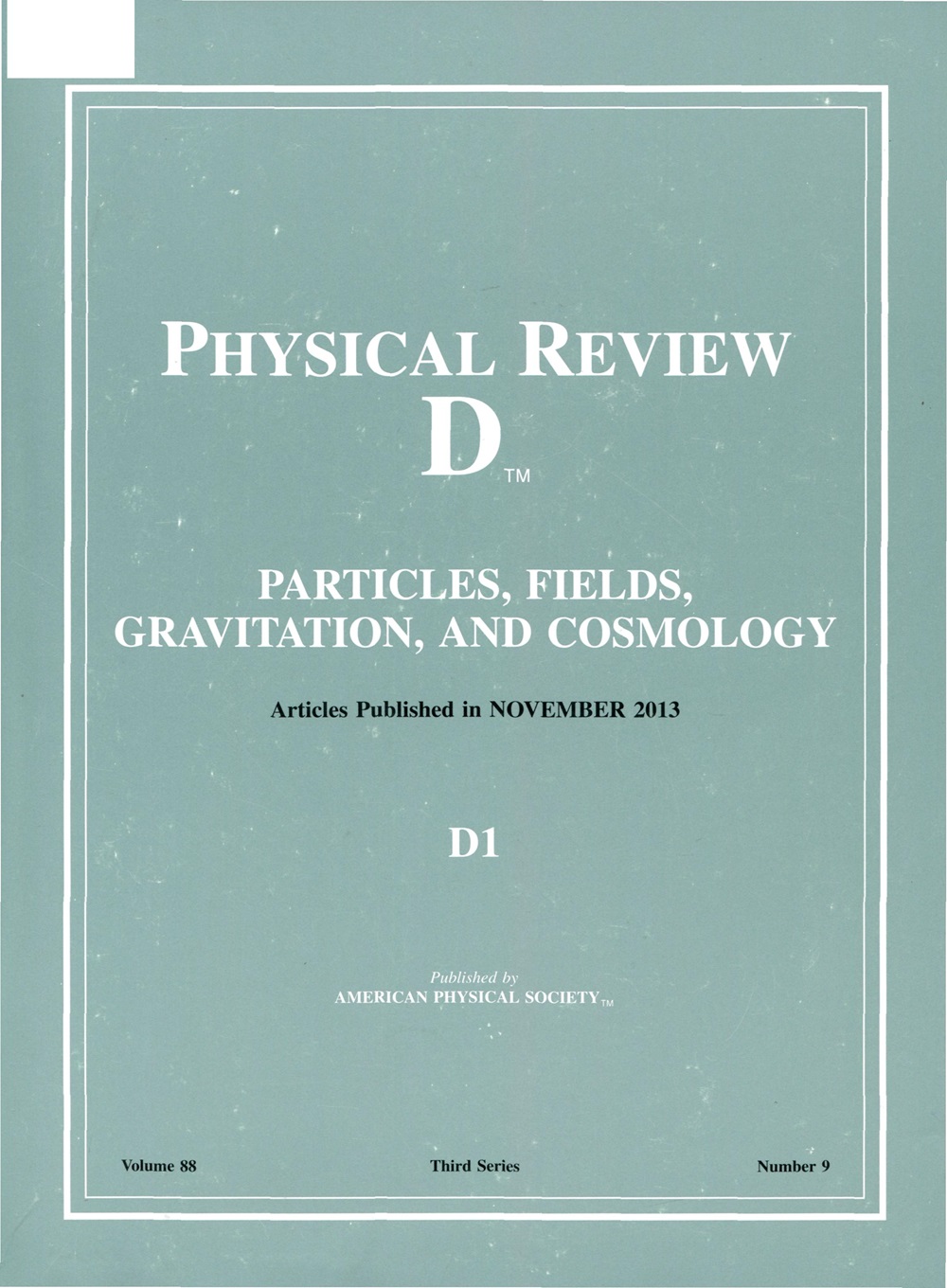Euclidean AdS wormholes and gravitational instantons in the Einstein-Skyrme theory
IF 5
2区 物理与天体物理
Q1 Physics and Astronomy
引用次数: 0
Abstract
Euclidean anti–de Sitter (AdS) wormholes provide a natural setup for studying the anti–de Sitter/conformal field theory (AdS/CFT) correspondence with multiple boundaries. However, from a bottom-up perspective, they cannot be embedded in the four-dimensional Einstein-AdS-Maxwell theory if these boundaries have positive curvature. Nevertheless, Maldacena and Maoz showed that this obstruction could be circumvented by introducing merons in the four-dimensional Einstein-AdS-Yang-Mills theory. In this work, we show that Euclidean-AdS wormholes also exist in the four-dimensional Einstein-AdS-Skyrme theory, whose matter sector possesses a nontrivial baryonic charge. We compute its free energy and show that it does not depend on the integration constants whatsoever, resembling topological solitons. Additionally, we obtain its holographic stress tensor and show that it vanishes, allowing us to interpret this configuration as a holographic Bogomol’nyi-Prasad-Sommerfield (BPS) state. Other topologically nontrivial ground states in Einstein-Skyrme theory are found, such as gravitational instantons, representing the homotopically inequivalent vacua of the theory. We find that they develop Hawking-Page phase transitions above a critical temperature. Some of these solutions are periodic in Euclidean time, representing the gravitational analog of calorons in Yang-Mills theory.欧几里得AdS虫洞和爱因斯坦skyrme理论中的引力瞬态
欧几里得反德西特(AdS)虫洞为研究具有多边界的反德西特/共形场理论(AdS/CFT)对应提供了一种自然的设置。然而,从自下而上的角度来看,如果这些边界具有正曲率,它们就不能嵌入四维爱因斯坦- ads -麦克斯韦理论中。然而,Maldacena和Maoz表明,可以通过在四维爱因斯坦- ads -杨-米尔斯理论中引入介子来绕过这个障碍。在这项工作中,我们证明欧几里得- ads虫洞也存在于四维爱因斯坦- ads - skyrme理论中,其物质扇区具有非平凡重子电荷。我们计算了它的自由能,并证明它不依赖于积分常数,类似于拓扑孤子。此外,我们获得了它的全息应力张量,并证明它消失了,允许我们将这种构型解释为全息Bogomol 'nyi-Prasad-Sommerfield (BPS)态。在爱因斯坦-斯基米理论中发现了其他拓扑上的非平凡基态,如引力瞬子,代表了理论的同伦不等价真空。我们发现它们在临界温度以上发生了霍金-佩奇相变。其中一些解在欧几里得时间中是周期性的,代表了杨-米尔斯理论中卡洛的引力类比。2025年由美国物理学会出版
本文章由计算机程序翻译,如有差异,请以英文原文为准。
求助全文
约1分钟内获得全文
求助全文
来源期刊

Physical Review D
物理-天文与天体物理
CiteScore
9.20
自引率
36.00%
发文量
0
审稿时长
2 months
期刊介绍:
Physical Review D (PRD) is a leading journal in elementary particle physics, field theory, gravitation, and cosmology and is one of the top-cited journals in high-energy physics.
PRD covers experimental and theoretical results in all aspects of particle physics, field theory, gravitation and cosmology, including:
Particle physics experiments,
Electroweak interactions,
Strong interactions,
Lattice field theories, lattice QCD,
Beyond the standard model physics,
Phenomenological aspects of field theory, general methods,
Gravity, cosmology, cosmic rays,
Astrophysics and astroparticle physics,
General relativity,
Formal aspects of field theory, field theory in curved space,
String theory, quantum gravity, gauge/gravity duality.
 求助内容:
求助内容: 应助结果提醒方式:
应助结果提醒方式:


